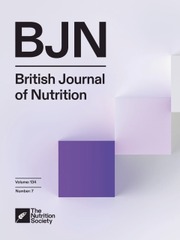No CrossRef data available.
Article contents
Nutrient intake variability and number of days needed to estimate usual intake in children and adolescents with autism spectrum disorder
Published online by Cambridge University Press: 28 February 2025
Abstract
Children and adolescents diagnosed with autism spectrum disorder (ASD) present feeding problems that may influence food acceptance and refusal. However, data regarding dietary intake variability in this population are either not available in the literature or not well-known. This cross-sectional study aimed to identify the within-person and between-person variability, and the number of days needed for a 24-hour recall (24HR) to estimate the usual intake of children and adolescents with ASD. Data were collected from 284 patients assisted at a public neuropediatric health service in the city of Pelotas, Southern Brazil. Food consumption was assessed using three non-consecutive 24HR. Within-person (S2w) and between-person (S2b) variances, the variance ratio (VR) and the distribution of energy, macronutrients and micronutrients were obtained using the Multiple Source Method® (version 1.0.1). The number of days of 24HR needed was calculated for correlation coefficients of 0·7, 0·8 and 0·9. For most nutrients, S2w was greater than S2b, resulting in VR > 1, except for age-group analyses where children up to 5 years old showed VR < 1. Two to three days of 24HR were estimated for most nutrients, considering a correlation coefficient of 0·8. Differences were observed according to sex and age group, with adolescents requiring more days of 24HR. These findings indicate the need to assess dietary variability among individuals with ASD according to the characteristics of this investigated population.
- Type
- Research Article
- Information
- Copyright
- © The Author(s), 2025. Published by Cambridge University Press on behalf of The Nutrition Society



